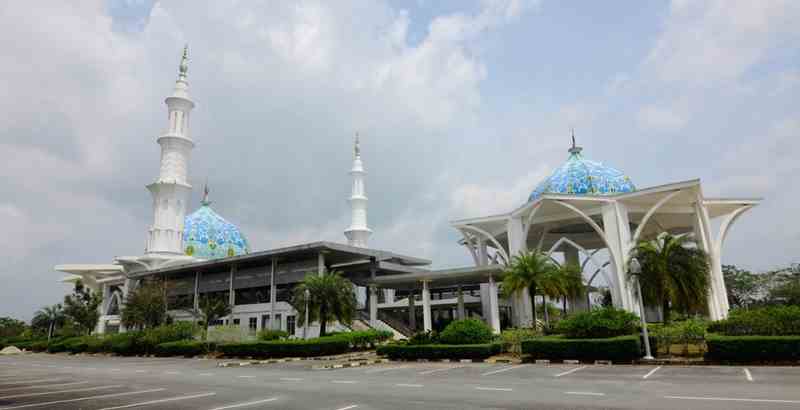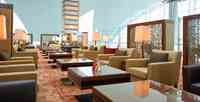
Johor Tourist Attractions
Tourism activity near Senai Airport and in Johor, Malaysia, has increased in recent years due to the airport's proximity to Singapore. The number of visitors from Singapore has grown steadily, and they are now the largest group of international visitors to Johor.
The increase in tourism has been a boon for the local economy, with more money being injected into businesses catering to tourists. This has led to more jobs and better infrastructure, making Johor an increasingly attractive destination for leisure and business travelers.
For more outdoor activities, please visit getyourguide.com.
Johor: SEA LIFE at Legoland Admission Ticket
Spend the day at Sea Life Malaysia, an attraction that uses captivating stories and up-close interactive educational adventures to encourage young visitors to learn about, appreciate and protect the ocean.
In the rockpool, you can see a seahorse and meet other aquatic pals. Marvel at the dazzling jellies as they glisten in the water, and then watch the stingrays do their stunning dance. Experience the ocean tunnel's 180 degrees and look for the infamous black-tip reef shark.
Visit the Malaysian Rainforest to see why Malaysia is one of the most diverse countries in the world. Young visitors to Marine Life Malaysia will be delighted to find Lego mini-figures and other Lego Sea creatures as they go on an educational trip that will help build their imaginations via play.
Take advantage of the special pass for Sea Life Malaysia, or choose the combo ticket that grants you access to both Legoland and Sea Life.
Johor: Desaru Coast Adventure Waterpark Entry Ticket
Come to Desaru Coast and enjoy Adventure Waterpark, located amid a classic Malaysian fishing hamlet. The waterpark can accommodate as many as 12,000 guests and features a wide range of soothing amenities and thrilling rides.
Fun things include riding the region's first water coaster and surfing in one of the world's largest wave pools. Use the cabanas and the over 20 slides, wet and dry. Spend quality time together as a family in a setting suitable for people of all ages.
Tours of Jalan Tan Hiok Nee are offered as part of the Johor Bahru Heritage Trail, organized by the Johor Bahru City Council and Tourism Malaysia-Johor. It is named after the wealthiest man in Johor at the time, a Chinese clothing trader who made a fortune in the region.
Before it was paved, the street was a charming back alley. Once the Johor government designated it a heritage site, however, the area's traditional homes and activities became hip tourist attractions. Clean sidewalks, new trees, and freshly painted storefronts make this street look brand new. It never lost its own unique quality, either.
Shoppers and diners will find an array of hip businesses along the sidewalk. One of a kind in every way. The historic building, however, is the true treasure. Bakeries like Salahuddin and Hiap Joo should be noticed.
The Boulevard is also home to several other arts and entertainment venues. There is a gallery where works by local artists can be viewed. The walls of the street are also decorated with murals. The route becomes a center of nightlife activity.
In addition to its cultural attractions, the street is also home to three religious sites frequented by people of many faiths. The area is home to Taoist, Sikh, and Hindu temples.
Pasar Karat, Johor Bahru's most well-known night market, is also on this street. You can pick up some unique souvenirs crafted by local artists as a tourist.
Johor Bahru Old Chinese Temple
Jalan Trus is home to the Johor Bahru Old Chinese Temple. There are high-rise buildings all around the temple. It is among the city's earliest surviving buildings.
Among the "Teochew," "Hoklo (Hokkien)," "Cantonese," "Hakka," and "Hainan." groups of Chinese, a temple is both a place of worship and a symbol of unification. The founders of the structure were the head of the Ngee Heng Company and other prominent Chinese citizens of the nineteenth century.
Five Deities are worshiped in the temple. Teochew, Hoklo (Hokkien), Cantonese, Hakka, and Hainanese all have their own deities that they honor.
Arulmigu Sri Rajakaliamman Glass Temple
Not only is the Arulmigu Sri Rajakaliamman Glass Temple one of the most popular tourist destinations in Johor Bahru, but it is also well-recognized as an important Hindu temple. For its innovative use of glass in a religious structure, the temple was recognized in 2010 by the Malaysian Book of Records.
You'll find the temple near the train tracks on the corner of Jalan Tun Abdul Razak and Jalan Mohd Taib. Originally constructed as a refuge in 1922, it sits on property donated by the Sultan of Johor.
Guru Bhagawan Sittar, current chairman and prominent priest, took over temple operations from his father in 1991. After inheriting the temple, the Guru had it reconstructed. While in Bangkok, he had the idea to rebuild the temple out of glass.
From a distance, he noticed a brilliant light, like a diamond, and subsequently learned it was a temple. Upon visiting the temple, he realized the dazzling light was actually the glass artwork at the front door.
He was so awed by the sight that he decided to replicate it in the Arulmigu Sri Rajakaliamman Temple. He thought that adorning a temple with magnificent glass artwork would bring in worshippers from all over the world. In 1996, after an extended closure, the temple reopened to the general public.
Three hundred thousand pieces of colored glass in hues including red, blue, yellow, green, purple, and white cover at least 90% of the temple's surfaces. Each strategically positioned chandelier gave the impression that the entire temple was bathed in light.
The air conditioning in the temple is state-of-the-art. It has a restaurant that serves vegetarian food and a hall for ceremonies and other special occasions.
Throughout the temple, you may find several statues. Ten sculptures, for instance, have a gold finish and are positioned low on the ceiling. The sculptures depict many stages of life, from infancy through old age and death.
The ten statues, all made of white marble, depict divine messengers, including Mother Teresa, Gautama Buddha, Sai Baba, and Guru Nanak Dev Ji. The Guru thinks people of various faiths will welcome them with open arms.
The murals give the temple even more personality than the sculptures. Two massive painted panels adorn the temple's left-wing ceiling and promote racial and social harmony worldwide.
A Malay girl is holding a cat, an Indian girl is petting a cow, and a Chinese girl is standing close to a dog. Another photo depicts a group of individuals of many faiths helping a Hindu biker who had fallen off his bike.
On Jalan Skudai in Johor Bahru is the Sultan Abu Bakar State Mosque. As of the year 1900, the mosque was fully functional. Specifically, Sultan Abu Bakar oversaw its construction.
Colonial English Victorian style was the inspiration for the mosque's design. The minarets of the mosque took their design cues from British clock towers of the 19th century. It also has a touch of Malay and Moorish architecture.
It is located on a hill with a commanding view of the Straits of Johor. At its maximum capacity, it can house 2,000 worshippers. Currently, the Department of Museums and Antiquities recognizes the Sultan Abu Bakar Mosque as a historical site worthy of preservation.
The bank of the Kota Tinggi River is where you'll find Firefly Valley Leisure Park. It occupies a beautiful location within the palm tree mansion. Visitors can enjoy seeing fireflies in their natural environment. As cities expand, firefly populations swiftly decline, becoming increasingly rare in urban areas.
Once you enter the park, a wooden bridge is the first obvious point of interest. The property is on a tiny island called Love Island, entirely surrounded by water. Animals like turtles, iguanas, and rare birds share the farm with more commonplace pets like rabbits and goats. The farm welcomes guests who wish to feed and interact with the animals.
As tourists go over the bridge, they can watch a waterwheel turn. On one side of the canal, a boat moored to a charming little wooden jetty.
Across the river from the park lies the Firefly area. In the evening, guests will be directed to the pier, where they will receive a safety briefing and learn the regulations of the boat ride, including donning a life vest, refraining from snapping photos, maintaining a low profile, and keeping quiet so as not to spook the firefly.
The trees along the riverbank come alive as people watch the fireflies dance with their blinking lights. You're sure to have a delicious and memorable meal in this tranquil setting by the river. There is also a playground set up for the kids.
The structures in Tropical Village are replicas of exotic ones from around the world. The precise location is Ayer Hitam, Johor.
There are four distinct areas within the theme park: the landmarks, the recreation area, the children's area, and the agricultural enclosure.
Garden replicas of world-famous monuments like the Eiffel Tower, the Great Wall of China, and others may be found in the Landmarks Section. Miniature versions of Malaysia and the rest of the world, as well as Malay culture, are included.
The Leisure Corner is geared toward families with children. It features rides including the Haunted House, House of Mirrors, and Dinosaur Train.
Oriental Island, the Pet Corner, and the Garden of the Shy Monkey are just a few fun features of the playground.
Accommodations are available for hire if guests spend the night at the park.
Johor's most prized and well-known landmarks are the Kota Tinggi Waterfalls. It is about 60 kilometers from Johor Bahru and 15 kilometers from Kota Tinggi.
Swimming and picnicking at the waterfall are two great ways to spend quality time together as a family.
Limited lodging for those who wish to spend the night, including dorms, camping grounds, and hotels, all of which have a few rooms available.
Kota Tinggi Waterfall features two water slides and pools, perfect for kids to splash around. Visitors can hire tubes throughout their stay to enjoy the two water slides and the 'natural' pools made by damming the stream.
During times of heavy rain or flash flood, individuals may be swept over the brink of the stream. Hence nets have been strung across the water at various points.
Tangkak, Johor is home to Gunung Ledang. If you want to see Johor's highest point, you must climb this. In 2005, the area was officially designated as Johor National Park. The park has an area of 8,611 hectares.
And it's a favorite with mountaineers, too. A climb of this magnitude requires at least four or five hours to complete. Tourists will find a wealth of exciting sites to investigate as they ascend. Some options are the Asahan Trail, Lagenda Trail, Ayer Panas Trail, and Jementah Trail.
Puteri Waterfalls, which drop from a height of 60 meters and have pools, picnic, and bathing spots lower downstream, and the Tangkak Dam, situated at the foot of the hill, are two of Gunung's many attractions Ledang has to offer in addition to mountain climbing.
The tale of Puteri Gunung Ledang, a female mountain goddess, has made the area famous in Malay culture. She's a mountain-dwelling princess with some serious magic on her sleeve.
She was courted to wed Sultan Mahmud Shah of Malacca. On the other hand, she made him meet seven insurmountable requirements before she would accept his proposal.
Chalets and campsites are available as lodging options.

FREE Cancellations, NO card fees!

Value Options View Offers
Useful Information about Senai Airport

See all the airport lounges, locations and opening times available at Senai Airport
View...
See all bars and restaurants at Senai Airport, including locations and if they are before or after check-in
View...
See all shops available at Senai Airport - plan your duty free shopping in advance
View...